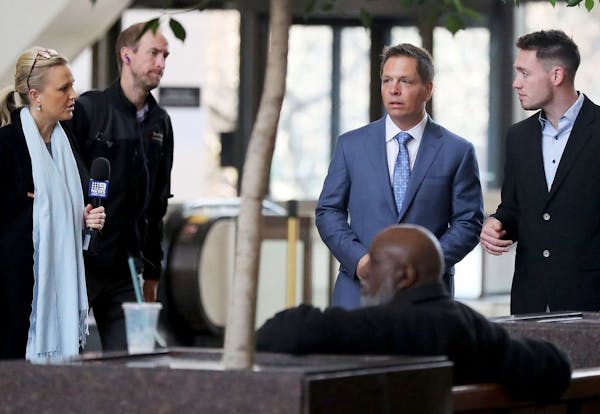In a reversal, a Hennepin County judge ruled Tuesday that the public and journalists will be allowed to view body-camera video introduced as evidence in the murder trial of former Minneapolis police officer Mohamed Noor.
Hennepin County District Judge Kathryn Quaintance previously decided to shield what she deemed "sensitive" footage from media and public attending the trial, expressing a desire to protect the privacy of the victim, Justine Ruszczyk Damond, and her family.
A coalition of local media outlets and open government groups, including the Star Tribune, filed a motion last week challenging the judge's plan as unconstitutional and a violation of common-law access to an open trial. On Tuesday morning, just before opening statements in the trial began, Quaintance said she was bound by First Amendment case law, which favors the coalition's argument.
"The court, like the jury, must follow the law — even if I disagree with it," she said.
The judge said she still has not deemed the video evidence admissible in court. But the ruling ensures that the public can see what the jury sees in the courtroom.
The decision was an unexpected victory for the First Amendment, given that Quaintance was skeptical about the media's arguments at a hearing last Friday, said Star Tribune managing editor Suki Dardarian, who was present at the hearings as a media coalition representative.
"I appreciate that the court recognized the public and media's First Amendment rights of access in a criminal trial, particularly one of such critical importance to the residents of this city and this state. It's difficult for a trial to be fair if it's not open to the public," Dardarian said. "This also showed that the media in Minnesota take seriously their rights as journalists. However, I am disappointed that a right so clearly articulated in the law required our legal intervention."
The judge also ruled that the courts can't restrict a sketch artist from drawing specific people in the courtroom, including jurors. She had previously signaled an intent to impose such a limit.
Leita Walker, the attorney representing the media outlets, also called the ruling a win for the public in the case, which has attracted national and international interest.
"The media coalition takes no joy in anything related to this trial," she said. "But we're gratified that it will remain open to the public so the press can accurately and thoroughly report on the proceedings, and the public can judge for itself the ultimate verdict and how the judicial system works."
The case is an unusual example of competing Minnesota news organizations banding together to intervene in a criminal trial.
The video does not capture the shooting, but it shows the events immediately afterward and Damond taking her last breaths, according to Quaintance. Damond was partly unclothed from lifesaving efforts.
Quaintance said the video shows evidence that could be crucial to both sides of the case, but she said she didn't want a courtroom full of strangers to see Damond in "extremely compromising positions," comparing the evidence to "snuff films."
She also stated an obligation to protect jurors from being identified in the case, fearing outside influence, which is why she considered the restrictions on the sketch artist.
Walker had argued that greater public interest in the trial should mean more access, not less, arguing it is vital for journalists and the public to be able to see evidence and how jurors and others in the courtroom react to it.
"No other court that we have found ever has done what you're proposing," she said.
Walker also said blocking the sketch artist from drawing specific people constituted prior restraint without a compelling cause.
Noor's attorneys also filed a motion objecting to Quaintance's restrictions; the prosecution supported her proposal in Friday's hearing.
On Tuesday, Quaintance said she needed to balance the public's access rights with the defendant's right to a fair trial, Damond and her family's right to privacy, and protecting jurors from "unwanted harassment."
She said court precedents place emphasis on the public's rights, not the victim's privacy, and she had to abide by that analysis.
"I'm pleased with the decision and think it's the right decision," said Nancy Cassutt, executive director of news and programming for Minnesota Public Radio, a member of the media coalition. "The judge will have to trust the media to do its job. I'm confident the MPR newsroom will do the right thing for our audiences."
Andy Mannix • 612-673-4036
Officials ID teen who died after jumping into southwestern Minnesota lake to retrieve canoe oar
Charges: Man fatally stabbed woman in neck outside downtown Duluth bar after closing time
Charges: Man posed as woman in video chats, lured men into sexually exploiting youngest of children

Fired South High math teacher accuses Minneapolis Public Schools management of 'cancerous rot'

